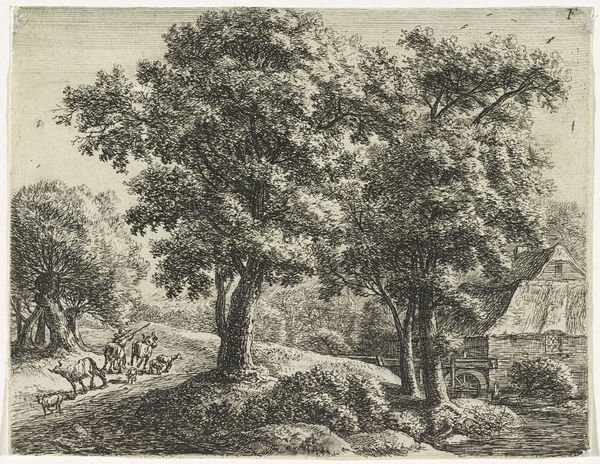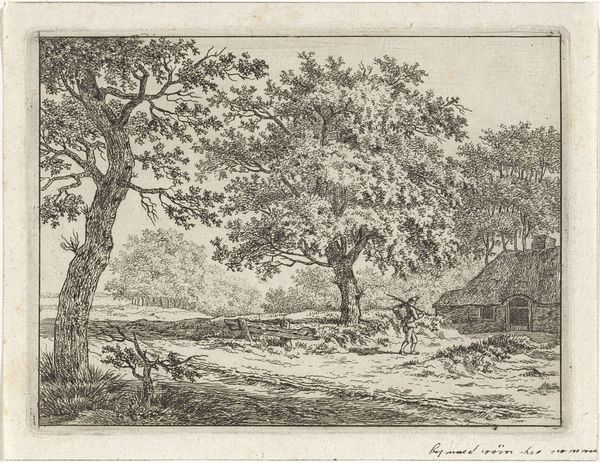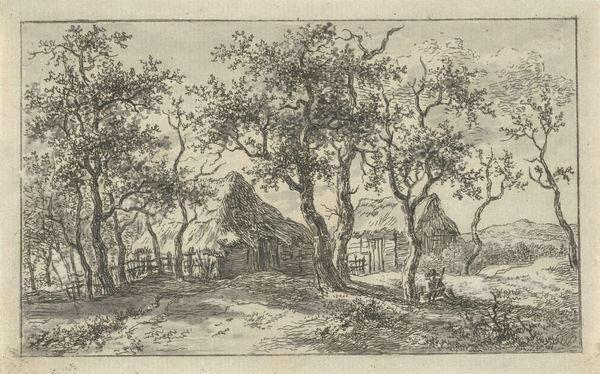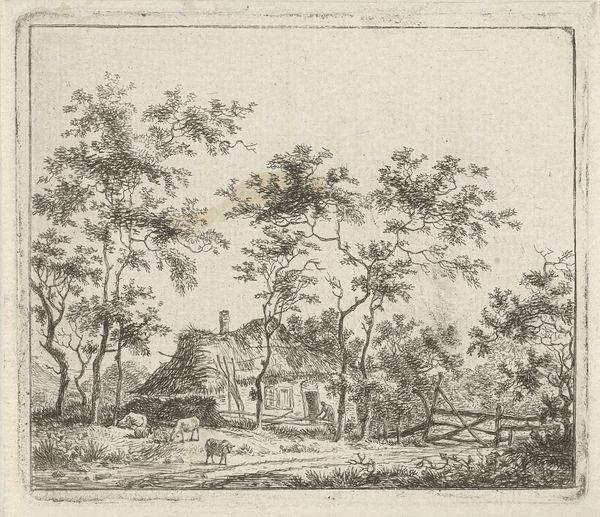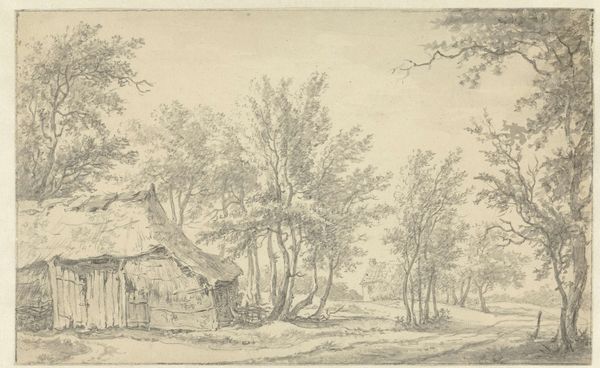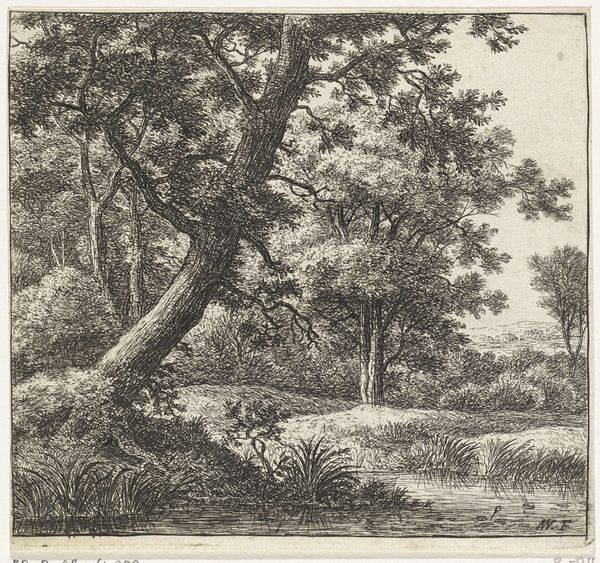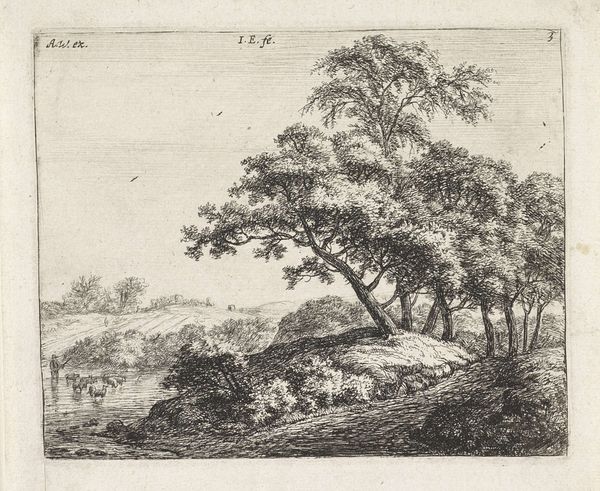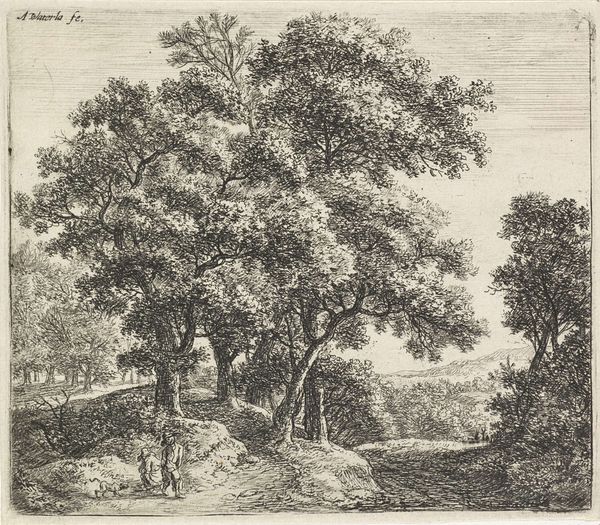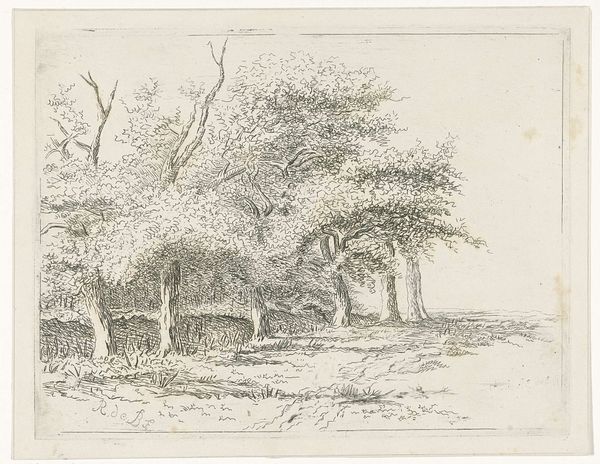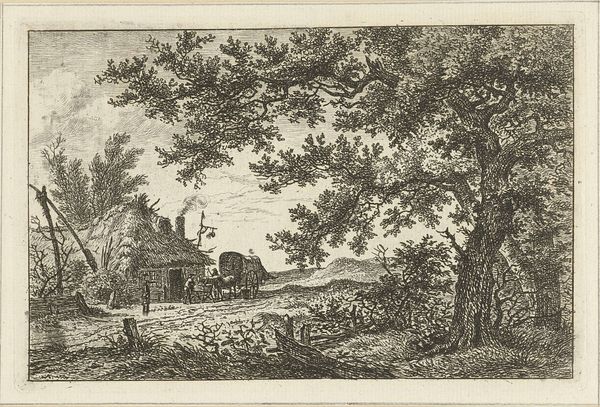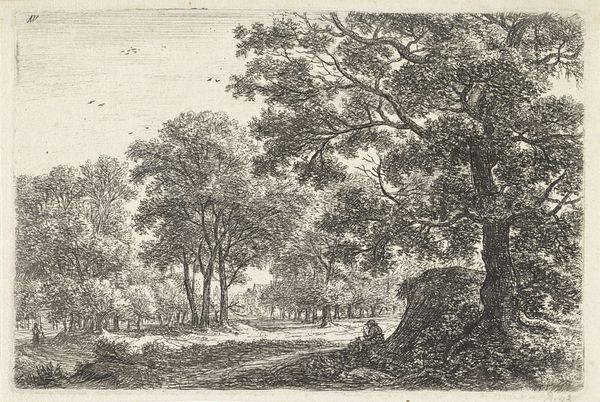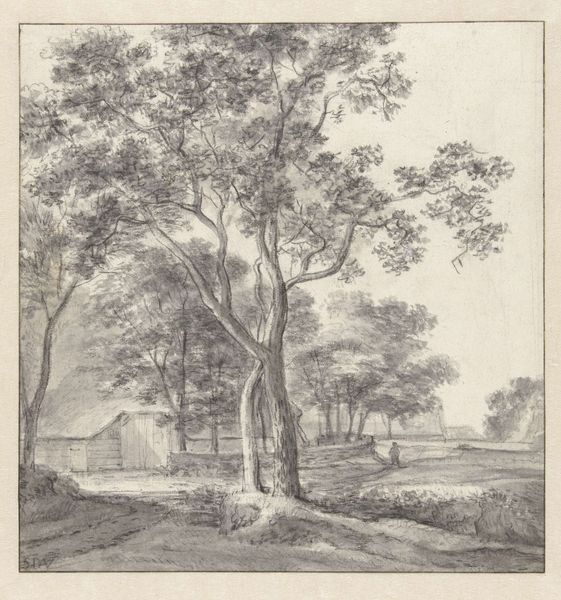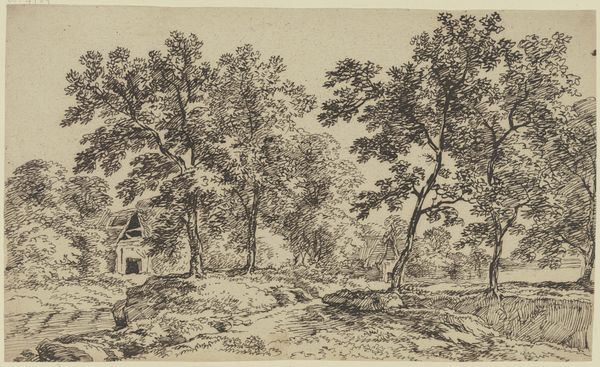
drawing, etching
#
drawing
#
baroque
#
pen drawing
#
dutch-golden-age
#
etching
#
landscape
#
forest
#
line
Dimensions: height 116 mm, width 139 mm
Copyright: Rijks Museum: Open Domain
Anthonie Waterloo created this etching, "Buildings along a forest path," sometime in the 17th century. What’s interesting here is the relationship between the natural world and the built environment. In the 17th century Dutch Republic, landscape art wasn't just about pretty scenery. It reflected the social and economic values of the time. This was a period of intense urbanization and economic expansion and this etching captures the tension between the idealized countryside and the realities of a rapidly changing society. Notice the buildings nestled within the forest, suggesting a harmonious coexistence. But also consider how the path cuts through the landscape, hinting at human intervention and control. Waterloo's choice of etching as a medium is also significant. Etchings were more accessible and affordable than paintings, making them popular among a growing middle class. To truly understand this work, we might turn to period maps, economic data, and social histories. By exploring such resources, we can appreciate how art is always shaped by its particular moment in time.
Comments
No comments
Be the first to comment and join the conversation on the ultimate creative platform.
